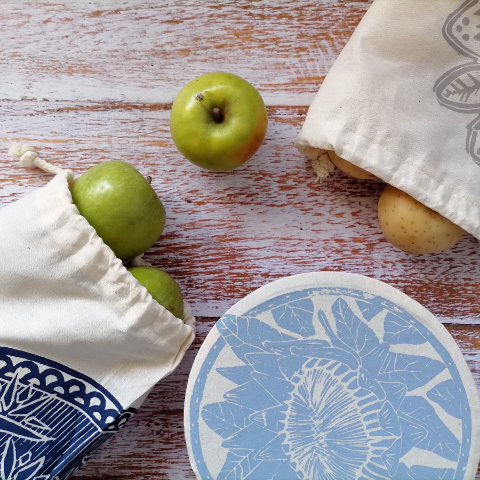
There’s a very simple joy that comes from the snap of a fresh broccoli stem or the crunch of a raw carrot. And while you may revel in your new bounty, the moment tends to be short lived as the struggle to keep pesky perishables perky settles in.
Our founder, Julia Schaffer, challenged me to take on the task of researching and uncovering the best strategies when it comes to storing fresh produce. And let me tell you, it’s been a journey and then some! From kitchen mishaps to experiments gone right, my eyes have been opened to the myriad of ways that my produce could be saved from ultimate rot.
With that being said, here’s what I found:
Start fresh
Let’s start at the beginning - the selection process. Selecting the freshest fruits and vegetables is the first step in ensuring that produce has a long shelf life. A handy tip that Julia gave me is to check how straight the stem of the plant is. Older stems tend to split apart over time. You can see the freshness of leafy greens by checking the condition of the stem where it has been trimmed from the plant.
I know it’s tough, but avoid pre-cut and pre-packaged produce. As a person who loves pre-packaged veggies, my heart sank several levels when I found out that it not only costs more but may also be less nutritious. Because the skin or rind of the plant typically locks in nutrients, pre-cut produce tends to be lower in nutrients and this is why it’s always best to rather select your fresh fruit and veg yourself. Our reusable bucket-shaped produce bags are perfectly designed for this purpose. They have a padded bottom, providing optimal protection for fresh produce.
Lastly, I learnt to make the most of shopping trips by planning ahead. Pre-planning meals has allowed me to buy my fresh produce as close as possible to the day that I plan to use it. A top tip that Julia taught me was to use leafy greens first and store firmer veggies for use on subsequent days. This makes them stretch a whole lot longer.

Consider the conditions
When storing fresh fruit and veggies, my research led to the three main points to consider: temperature, ethylene and airflow.
Some fruits naturally release ethylene gas, which hastens the ripening of certain types of produce, causing them to decay at a much faster rate. With this knowledge in mind, I have now learned how to separate ethylene-sensitive fruits and veggies from those that emit this gas.
I also discovered that air circulation is very important for produce that keeps best at room temperature. Instead of using it to store random bits and bobs, I started making proper use of my fruit basket after realising that plastic bags trap air in. It also happens to make a pretty nice display! Another handy tip is to use produce bags to store this type of produce, as they are breathable and encourage air circulation.
For produce that requires refrigeration, don’t be like me and forget that you have crisper drawers!
Don’t misuse the crisper drawer
Do you know how to use your crisper drawer correctly? If not, you’re not alone. Neither did I before this challenge! While this may seem like the perfect place to store beer cans or leftover containers, the crisper drawer is actually meant for fresh produce and when used correctly, can extend the life of fruit and veggies.
Crisper drawers offer a more humid environment than the rest of the fridge and can usually be adjusted between high and low humidity through a sliding humidity control setting that opens or closes a small vent in the drawer. If your crisper drawer, like mine, doesn’t have a humidity control, that simply means that it's a high-humidity crisper.
When separating produce between drawers, the general rule of thumb is to put produce that tends to rot easily in a drawer with a low-humidity setting. Produce that wilts will go into a high-humidity drawer.
Another amazing fact I discovered is that the crisper drawer is designed to work best when two-thirds full! Just make sure to give your precious produce enough room to breathe when packing.

Greens
Delicate leafy greens such as rocket arugula, lettuce, mustard greens, watercress, English spinach and chard are notoriously quick to wilt and rot. A great way to store this type of produce is to rinse the leaves and lay them out on a clean, dry tea towel and gently roll them up before storing in the crisper drawer. For sturdier leaves such as kale or cos lettuce, you can rinse and toss into produce bags before storing in the fridge.
Always use your greens efficiently - pre-plan your meals and try to buy them as close as possible to the day you intend to use them. Consider making a salad or a dish that requires raw greens on the day you bring them home from the store.
Here’s a downloadable guide with some helpful tips for produce storage.

